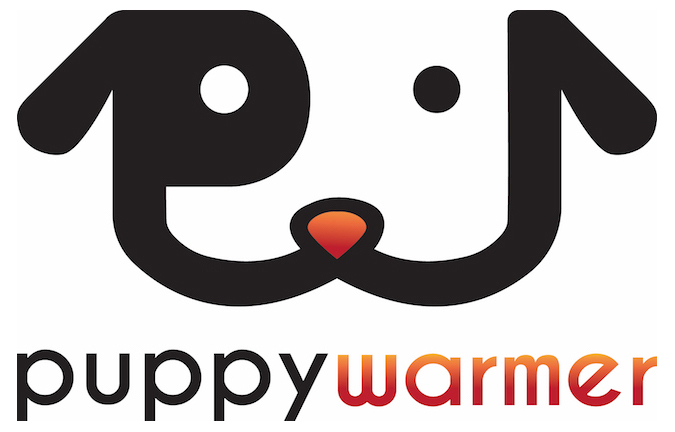Humidity and the Neonatal Puppy
As Winter approaches, it is a good idea to think about the relationship the humidity of your whelping area has on the health of your neonatal puppies.
If you reflect on your breeder or rescue experience, and realize that it is more difficult to save puppies or keep puppies healthy during the winter months—please continue reading.
While this article will also benefit breeders and rescue located in a region that is low humidity year-round, most breeders and rescue customers will see seasonal fluctuation in humidity levels in the whelping area. These are often Northern Climates where temperatures fall regularly below freezing levels. The cold air outside holds little moisture. Furnaces also reduce moisture as they heat and circulate air.
The ideal humidity range for puppies is 40-60%. Most puppies will thrive in this range. If you have a dehydrated puppy, in addition to subcutaneous fluids, humidity levels of 55-70% could help in their recovery. It is a good idea to consult a veterinarian regarding dehydrated puppies.
Helping a dehydrated puppy can be challenging, but best practices to prevent dehydration can be easy and cost effective. To help understand preventative measures better, we will first answer a couple commonly answered questions.
How does low humidity affect the health of a puppy?
The two primary ways low room humidity (below 30%) can affect a neonatal puppies health are dehydration and dryness of the respiratory system.
We often think of hydration as the intake of fluids. This is certainly a factor. Take a moment to think about the number of breaths a puppy will take in a day. On average a neonatal puppy takes 20 breaths per minute. That is 1200 breaths an hour.28,800 breaths per day. In a dry room, the puppy will breathe out moist air (readily absorbed by the dry room) and breathe in dry air. With each breath, a little hydration is lost. At 1200 breaths per hour, a dry room, when combined with other normal bodily functions, can remove hydration at a rate faster than a puppy can replace it.
Similar to the above, a puppy’s respiratory system can dry out fast in a low humidity room. Lungs and airways operate best when moist. When dry, they are more susceptible to airborne viruses and bacteria.
Signs a neonatal puppy could be dehydrated include:
· Skin that is slow to return to original position when pulled up slightly (tented skin)
· Darker yellow, orange, or brown urine (more concentrated, less water in the urine)
· Mouth and gums feel sticky (not moist)
While you may see other issues related to low humidity such as dry or flakey skin, dehydration and a vulnerable respiratory system is dangerous—but highly preventable.
Prevention early beats heroics late
The best way to combat dehydration is prevention
Before we talk about preventative measures, we will first briefly discuss the concept of a microenvironment. Whether it be an incubator or a warmed whelping box you are creating a microenvironment or a micro habitat. A microenvironment is a specific area distinguished from its immediate larger surroundings (the room) by factors such as temperature, humidity, oxygen, protection, and light. Microenvironments have a dependency on the larger immediate environment. At Puppywarmer we say, “the room is part of the system.”
If you want your humidity in the microenvironment to be right, the room must be at an acceptable range of humidity. Generally, this is 30-45%. Our 18×18 Incubator is 3.375 cubic feet. A 12’x12’x8’ room has 341 times the volume of our 18×18 incubator. If the room is at 20% humidity the sheer volume of dry air will draw the humidity out of the incubator. The differential in relative humidity and volume are too great. In fact, attempts to keep an incubator at proper humidity levels in an excessively dry room can lead to other issues such as locally chilling a puppy and excessive condensation.
The room is the root cause. Thankfully, there are mass produced, affordable products that can correct room humidity–Ultrasonic Room Humidifiers. Ultrasonic room humidifiers differ from older style evaporative humidifiers. Ultrasonic Humidifiers employ an electronic process and shoot a plume of fine mist into the air. Evaporative humidifiers have a wicking material that a fan blows air across. Older wicking media have risk of forming bacteria and mildew. Ultrasonic humidifiers to not carry the same risk.

Puppywarmer does not sell Ultrasonic Room Humidifiers. They can be found on Amazon and home improvement-oriented stores and websites such as Home Depot, Lowes, and Menards. Capable brands include Levoit, Holmes, Elechomes, Ultrasonic are often rated for a room size. Seven-liter models often have to be refilled just once a day. Look for a unit that can be set for a specific room humidity. You do not need a “warm mist option.” When in doubt go one size up. An ultrasonic room humidifier for a small room is often $115-$135 (thought more options are now available and highly functional ultrasonic room humidifiers are available for less than $100. Larger room models, often holding more than 10L of water can be $175-$225 at the time of this blog article in 2025.
Correcting room humidity to 35% has many benefits:
· The incubator will be better able to provide the right microenvironment for your at-risk puppies
· Healthy puppies in the whelping box are less susceptible to respiratory illness and dehydration
· The mother dog is also more comfortable and less susceptible to respiratory illness
· The humans in the room are also less susceptible to respiratory illness.
If you suspect your puppy is dehydrated, these preventative steps are also beneficial to that puppy. If you suspect dehydration, please consult with your veterinarian. Better yet, plan ahead this winter and start your litter off with a properly humidified room. Planners save puppies.
